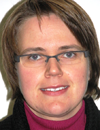Tuesday, 15 September 2015
08:00 | Registration | |||
Session Chair: Saskia van Ruth | ||||
Session: Food Microbiology | ||||
09:00 | Guidelines for Harmonisation, Standardisation and Validation of Molecular Methods in Food Microbiology | |||
09:45 | Innovative Methods to Detect Viruses in Food | |||
10:30 | Coffee and Networking | |||
11:00 | CANCELLED DUE TO FLIGHT DELAYS - Application of Pyrosequencing to the Microbial Ecology Foods | |||
11:00 | What's New in Food Microbiology Diagnostics: A Molecular Perspective | |||
12:30 | Lunch & Networking | |||
13:30 | Poster Session | |||
Session Chair: David Rodriguez-Lazaro | ||||
Session: Food Authenticity | ||||
14:00 |
| |||
14:45 | Tracing the Dietary Background and Geographical Origin of Animal-derived Foods | |||
15:45 | Coffee and Networking | |||
16:15 | Brand Protection, Quality Assurance and PAT. How can Vibrational Spectroscopy Help? | |||
17:00 | End of Day 1 | |||
17:30 | Prosecco and Punting on the River Cam | |||
Wednesday, 16 September 2015
Session Chair: Jens Sloth | ||||
09:00 | The Fight Against Food Fraud: The Analytical Tool Box | |||
Session: Emerging Issues | ||||
09:45 | Detection and Characterization of Nanoparticles in Food and Biological Materials | |||
10:30 | Coffee and Networking | |||
Session: Food Allergens | ||||
11:00 |
| |||
Session: Contaminants | ||||
11:45 | How to Overstep Matrix Effects for Pesticides Detection Residues | |||
12:45 | Lunch & Networking | |||
13:30 | Poster Session | |||
14:00 | Accumulation and Translocation of Macro, Micronutrient, Non-essential and Toxic Elements by Swiss Chards (Beta Vulgaris Subspecies Cycla) Grown up in an Open-air Plot Under Organic or Conventional Farming Techniques | |||
14:45 |
| |||
15:30 | Coffee and Networking | |||
16:00 |
| |||
16:45 | Close of Conference | |||



